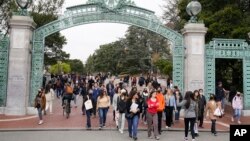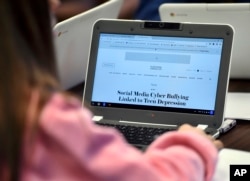Student Union
- By Bryan Lynn
Violence Creates 'Zones of Fear' in Schools Globally

About half of students age 13 to 15 worldwide have experienced violence in school, including bullying, corporal punishment, school shootings and war, a U.N. report said.
"For millions of students around the world, the school environment is not a safe space to study and grow," the UNICEF report said. "It is a danger zone where they learn in fear."
Bullying is one of the biggest problems in schools, with 1 in 3 students experiencing it, the report said. In industrialized nations, 17 million students age 13 to 19 admitted to bullying others at school.
Ethnic minorities, children with disabilities and members of the LGBT community are more likely to be bullied than other groups. In Britain, 30 percent to 50 percent of young students who identified as gay experienced bullying.
Boys are more likely to experience bullying that includes physical violence or threats. Girls are more likely to be victims of "psychological or relational" forms of bullying, such as having false information spread about them or being shut out of social groups, the report said.
Cyberbullying — described as "willful and repeated harm" caused through the use of computers, mobile phones and other electronic devices — is increasing. Victims may develop alcohol and drug problems or have difficulties with schoolwork as a result of the harassment. Some resort to suicide, the report said.
The study found about one-third of students — or 150 million worldwide — aged 13 to 15 reported being involved in physical fights. Data from 25 countries showed that 20 percent of girls and 50 percent of boys reported physical attacks by other students at least once during the past year.
UNICEF said about half of all school-age children live in countries where corporal punishment is allowed. The organization estimates that about 720 million children are not protected from such violence. In some classrooms, teachers and other school officials are "far too often the source of fearful learning environments."
About 158 million young people live in violent, or conflict-affected, areas. For these students, classrooms may not be safer than the communities in which they live.
The U.N. said there were more than 500 direct attacks in 2017 on schools worldwide. Nearly 400 happened in the Democratic Republic of the Congo, while 26 attacks were identified in South Sudan. In Syria, 67 attacks were reported. At least 20 school attacks happened in Yemen. Many of these attacks were deadly, UNICEF said.
School shootings have also become a major form of violence in many areas. Between November 1991 and May 2018, 70 school shootings were reported in 14 countries. Each shooting involved two or more victims, with at least one death.
UNICEF calculated the physical, mental and economic costs of school violence to be $7 trillion a year.
UNICEF is calling on governments to develop and enforce laws and policies aimed at keeping students safe in schools, as well as in their online experiences.
The organization also has launched an internet campaign, called #ENDviolence, in an effort to raise awareness and increase public support for the fight against violence and bullying in schools.
See all News Updates of the Day
Proposed settlement offered over financial aid allegations

A group of U.S. colleges and universities have agreed to settle a lawsuit alleging deceptive financial aid tactics, according to a report published in The Hill.
The schools would pay $284 million to plaintiffs who were enrolled full-time and received financial aid between 2003 and 2024.
The schools have denied the allegations. (April 2024)
Universities in Middle East building research relationships with China

As China bolsters research relationships with universities in the Middle East, the United States has taken notice – especially when that research involves artificial intelligence.
Reporting for University World News, Yojana Sharma has the story. (March 2024)
Tips for staying safe while studying in the US

Recent news events have raised safety concerns among some international students studying in the United States.
Adarsh Khandelwal, writing in the India Times, has tips for staying safe from the moment you arrive until the day you complete your studies. (March 2024)
Some colleges are making digital literacy classes mandatory

A 2019 study by Stanford found that most college students can’t tell the difference between real and fake news articles. Amid rampant online disinformation, and the threat of AI-generated images, some schools are making students learn “digital literacy” to graduate.
Lauren Coffeey reports for Inside Higher Ed. (March 2024)
With federal student aid delays, students aren’t sure what college will cost

The U.S. Department of Education’s federal student aid form (FAFSA) experienced serious glitches and delays this year.
Now, many students have been admitted to college, but don’t know how much money they’ll need to attend.
Read the story from Susan Svrluga and Danielle Douglas-Gabriel for The Washington Post. (March 2024)







